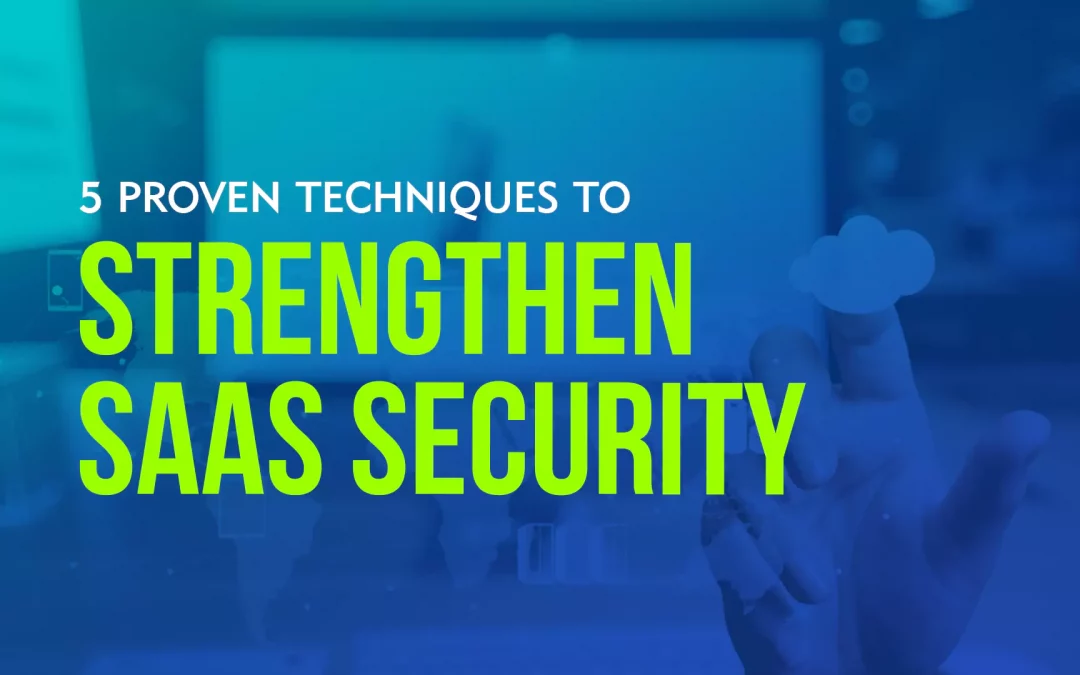The frequency of cyberattacks is increasing so rapidly that the White House had to warn businesses in 2021 asking them to be on high alert. A warning like this was a wake-up call for companies not only in the US but worldwide.
When we talk of SaaS solutions, many SaaS users believe they don’t need to worry about the security of their data stored in the cloud. While in reality, SaaS security is an important component of business strategy. Companies that overlook their information security posture have to suffer from unexpected security concerns with long-term effects on business growth. Although SaaS users don’t need on-premises installation, they need to align with regulatory standards when it comes to secure coding and effective password management.
In this context, this article describes 5 proven techniques that can help businesses strengthen their SaaS security and timely address their security concerns.
So, let’s get started!
Why SaaS Security is a Matter of Concern?
SaaS applications have already taken the corporate world by storm. With a 20.6% year-on-year growth, the estimated size of the global SaaS market is expected to reach $716.52 billion by 2028. This is phenomenal growth because businesses across diverse sectors are now investing in cloud-based solutions.
On the other hand, SaaS security is also a reality that can compromise systems’ performance and result in declined productivity. A 2022 study by HubspotUserContent revealed that misconfiguration is the leading cause (43%) of SaaS security incidents. Besides, the report also found that the lack of visibility, multiple departments accessing SaaS security settings, limited knowledge of SaaS security, and inappropriate user permissions are some of the leading factors behind SaaS misconfigurations.
How to Close the SaaS Security Gaps?
Experts believe that CTOs and IT professionals should focus on four key areas to close their SaaS security gaps. These areas include compliance, visibility, data security, and threat prevention. Here are 5 ways businesses can strengthen their SaaS security:
1. Conduct SaaS Security Risk Assessment
Before you can strengthen your SaaS security, you need to identify the gaps and vulnerabilities that can result in a data breach. The best way to do so is by conducting a comprehensive SaaS security risk assessment that involves evaluating the existing security measures to determine areas that need further improvement.
A detailed SaaS security risk assessment report may cover the following aspects:
- Known security risks
- Current protection level
- Systems that need extensive protection
- Type of encryption currently in use
- Password management policy
- Current response plan in case of a security breach
2. Educate Your Employees
Based on the findings of risk assessment, you need to educate your employees and discuss various ways they can contribute to strengthening the SaaS security at your organization. For this purpose, hold a security meeting inviting key team members from different departments and get their suggestions.
Moreover, include cybersecurity experts in these meetings and hold various training sessions to get better results. Once your employees are well aware of their responsibilities when it comes to mitigating cybersecurity risks, they can handle unusual situations more professionally and overcome a data breach.
Additionally, ask all your team members to use two-factor authentication to protect their assets and ensure data privacy. Make sure they use secure passcodes not just on the company’s devices but on their private phones to eliminate the risk of losing company-sensitive data.
3. Close the Critical Configuration Gaps
As indicated in HubspotUserContent’s study, misconfiguration results in 43% of SaaS security incidents. Although configuration is considered the biggest strength of SaaS apps, it becomes their weakness due to poor monitoring.
It is, therefore, essential for companies to fill their critical configuration gaps to get better visibility into SaaS applications. Focus on systems that contain the most sensitive data and give access to multiple users across different departments. Similarly, make sure your employees have sufficient knowledge of Software as services security gained through training sessions and professional experience.
Lastly, control inappropriate user permissions to restrict unauthorized persons from accessing your systems without your permission.
4. Implement Higher Security Authentication
Legacy authentication methods are no longer capable of ensuring protection against sign-in attempts from unauthorized users. Today, businesses need a well-research multifactor authentication (MFA) policy to block malicious authentication requests and strengthen SaaS security.
According to Microsoft, accounts with MFA enabled are 99.9% less likely to be affected by automated attacks. Hence, make sure to enable multifactor authentication (MFA) across all your systems to secure your passwords.
5. Regularly Monitor Third-party Access
Most SaaS applications offer third-party integrations to make operations smoother and more efficient. However, such integrations are sometimes risky because cybercriminals can change conditional access rules to gain unauthorized access. Eventually, they can steal confidential information and misuse systems for their own purposes.
To address this issue, validate your conditional access rules regularly and look out for IP block exceptions to identify unusual changes. Similarly, review third-party access and approve all these installations with high-level permissions. Only those apps should be granted permission that follows the principle of least privilege. These steps will reduce the risk of data breaches to a great extent and strengthen your SaaS security.
Wrapping Up
The rising adoption of SaaS across business-critical functions makes cloud-based applications key contributors to organizational growth. However, robust measures are also required to strengthen SaaS security and thwart potential cybersecurity challenges.
To do so, businesses should start by conducting an initial risk assessment to identify potential vulnerabilities and determine gaps. Based on that assessment, arrange a meeting with key stakeholders at your organization and cybersecurity experts and discuss various ways you can overcome challenges that can compromise system security.
Similarly, keep monitoring your SaaS ecosystem regularly to timely identify unusual activities and address misconfigurations that account for 43% of SaaS security incidents worldwide. Lastly, closely monitor third-party integrations to secure your confidential data and ensure business continuity without any interruption.

